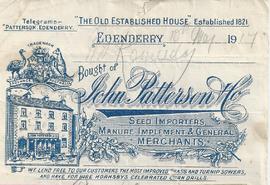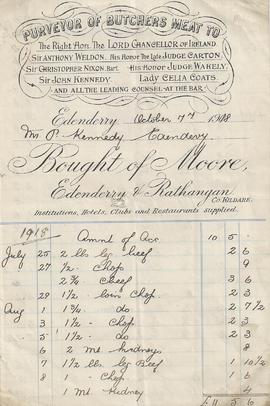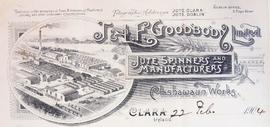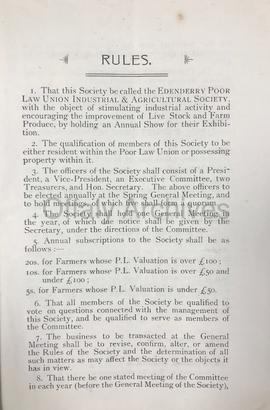- Pessoa coletiva
- 1634-1898
The grand juries were among the most important organs of local administration at county level until the passing of the Local Government Act of 1898. Although originating in Norman times, the first mention of grand juries on Irish Statute books is in 1634. King’s County, which was shired in 1556, and like all other counties was used as a unit for the administration of justice, although over time, its administrative function increased and it became responsible for public works such as road construction and later for construction of infirmaries, bridewells and other institutions of local governance.
The jurors originally comprised ten in number but this was raised to twenty-three. Members of the grand jury were selected by the high sheriff from the leading property owners in the county, the order in which the jurors stood on the list being an indication of their social standing. The sheriff’s discretion in the nomination of the grand jury was total. The sheriff was a political appointment and it frequently happened that he filled the list with his friends and supporters. Catholics were prohibited from serving on grand juries until 1793 but even after this date, jury lists were predominately Protestant due to the concentration of property in Protestant hands.
Over time the administrative function increased. The 1634 and subsequent acts authorized the justices of the assizes with the consent of the grand jury to levy the costs of roads and bridges on the county or barony. This rate was called the county cess. By 1705 the grand juries were authorised to make presentments or propose works.
The grand juries met twice yearly at the Spring (or Lent) Assizes and the Summer Assizes. The King’s County Grand Jury held its assizes at Philipstown (Daingean) until 1835 when the administration of the county moved to Tullamore. The presentment sessions dealt with the expenses of each barony and then for the county-at-large. They were conducted by the justices of the peace and from 1833 included five to twelve cess payers.
The Local Government Act of 1898 abolished the administrative functions of the grand juries, these functions transferring to the newly formed county councils in 1899. The judicial functions ceased in 1924.





